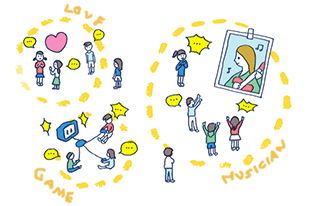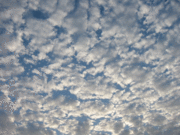日本でフォトジャーナリズムを学ぶのは簡単ではないと思っています。
クオリティの高い、写真だからこそ言語を越えて、視覚で世界と対和が出来る写真を撮ること。そのためには何をすべきなのか、何を学ぶべきなのか...。フォトジャーナリストを目指す、または手探りで活動を始めた写真家にとってもフラストレーションとなっている部分ではないかと思います。
世界的に考えれば、フォトジャーナリズムを学べる機会は豊富にあります。大学に進学しなくても、ワークショップという形で短期的に充実したことを学べます。そして、何より、そこで構築される人とのネットワークが私は素晴らしい副産物だと思っているのですが...、そこで、今回はまたトピックを立ち上げることにしました。
このトピックではフォトジャーナリズム系のワークショップに参加された方の経験談をみなさんと共有していきたいと思います。
タイトルは「ワークショップ参加のススメ」とし、経験談をお寄せ頂いた一件につき「その◯(数字):ワークショップ名」ということで進めていきたいと思います。よって、ほかのワークショップの場合は別でトピックを立ち上げます。
今回はじめてにあたり、マイミクさんの私。http://
イー・サムソンさんは香港生まれ、イギリス育ち。二年前まで、年に2、3ヵ月エチオピアに、(NGO アフリカ理解プロジェクト) 写真を撮りに行っていたという方です。
↓からワークショップに参加をされたサムソンさんの感想を転載します。
メキシコシティでのFoundry Photojournalism Workshopは、今年で始まったもので、教室がなかったり、段取りが悪いとこもあったけど、500ドルという値段で、素晴らしい先生たちがいました。いや、先生だけでなく、生徒たちも。
私は初めて写真を見た気がする。
同じクラスの人たちは、大学でジャーナリズムの勉強をしおわったばかりの22、23歳が多く、私には聞いたこともない(フォトジャーナリストの)名前が次々と挙げられ、もっと勉強しないとなって思った。それぞれ今まで撮った写真を見せあって、思ってることを、素直に相手に伝えた。
伝えられた思いを、素直に受け止める。自分のエチオピアで撮った写真が、「観光客のスナップ写真みたい」って言われたとき、なんだか解放された気がした。っそう、実は私も見るたびに思う。だれかそう言ってくれないかなってずっと待ってたかもしれない。
いい写真とは何か、そうでない写真とは何か。いままで知らずにシャッターを切ってた気がした。被写体に信頼してもらい、親密(Intimate)な関係になる。と同時に、壁にいる蚊のように、自分の存在を消す。
私は、noorのStanley Greeneのクラスにいました。クラスのタイトルは、Vision from the front / the journey is the destinationだった。頑固なおじさん(59歳)で、デジタルが嫌いでね、フィルムがいいぞ、ライカいいぞってずっと言ってた。フォトジャーナリストになるということ、なにかをなしとけることは、なにかを犠牲しないといけないこと。人間の尊厳を、リスペクトすること。写真がいかに孤独なものであることを。
ヴィションというものを1週間のワークショップを持つようになったとはいわないが、これから、いままで築いてきた自分ではなく、新しく始められる気がする。目の前のことに一生懸命になれないのなら、将来こうなりたいなんて言う資格はない。おおげさかもしれないけど、私は写真ではなく、写真という生き方を垣間見れた気がした。
行ってよかった。来年はインドのデリーです。若者よ、英語が出来るのなら、行ってきな。日本は小さな、小さな島だ。
PS うちらのグループだけ、個人個人の発表ではなく、一つのグループとして、一つのプレゼンテーションを作りました。先生が選んだ二人編集者を元に、全員がその1週間で撮った写真を一つのパソコンに入れ、「あり」、「なし」とみんなで決めてできたものです。全員が写真入ってるとは限らない。私の撮ったものは何枚か入っています(あと最後のも私)。少し大きなファイルだが、時間がありましたら、http://
毎晩が現役のフォトジャーナリストのポートフォリオと、その後、パネルディスカッションがあって、戦場カメラマン、ラテンアメリカのカメラマン、女性カメラマン、Agencyを作った人たち(VII, noor)、編集者(National Geographic)、クオリティの高いものが観れただけでなく、オープンに質問を答えてくれて、すごく面白かった(面白いって、私の乏しい日本語ではそうしか言えないが、It was eye opening, just fascinating)。
戦場カメラマンたちは、戦場とはどういうとこなのかを教えてくれました。繰り返されるべきでないものは、いまもいろんなとこで起こっている。それを止めるんだ。
恐怖と死と向き合うこと。ときには自分が人間であることを忘れてはいけない、カメラを下ろすときだってある。死体が延々とスライドショーに流れて、撮った人がその場に立ってると、観ずには、向き合わずいられなかった。そこに湧き出てくる感情は、恐らく会場にいた100人の若者も同じく、「気持ち悪い」とか、「かわいそう」とかじゃない。「悔しさ」、「怒り」に溢れていた。
女性カメラマンたちは、途上国にいる女性たちの力になろうとしている。本当は寂しかったりもする。私だって、子どもがほしいって思うさ・・・と。
何でアフリカにある出来事が、アフリカ人のカメラマンではなく、言葉も出来ないアメリカ人がわざわざ撮りにくるのか。日本とは違って、「問う」教育を受けた人たちだけに、会場から出てくる質問は、一つ一つ深みがあって、パネルはできるだけそれらを正直に答えてくれた。
これが勉強だ。
人から学ぶとはそういうことな気がする。
ポートフォリオレビューというのもあって、自分の先生でないプロに写真を観てもらえる夜があって。あなたがどんな人とかじゃない、あなたの写真が何を言っているのか。まるで翻訳をしてくれてるみたいに、一枚一枚の写真が言葉になっていく。
▲まで転載。
尚、このトピックでは、折角なので質疑応答が出来たらと思っています。
情報を人々と共有するために、ワークショップに参加したことにたいして、聞きたいこと、知りたいことを是非こちらに書き込みして下さい。
尚、サムソンさんは日本語が母国語ではないので、その点を予めお伝えしておきます。
クオリティの高い、写真だからこそ言語を越えて、視覚で世界と対和が出来る写真を撮ること。そのためには何をすべきなのか、何を学ぶべきなのか...。フォトジャーナリストを目指す、または手探りで活動を始めた写真家にとってもフラストレーションとなっている部分ではないかと思います。
世界的に考えれば、フォトジャーナリズムを学べる機会は豊富にあります。大学に進学しなくても、ワークショップという形で短期的に充実したことを学べます。そして、何より、そこで構築される人とのネットワークが私は素晴らしい副産物だと思っているのですが...、そこで、今回はまたトピックを立ち上げることにしました。
このトピックではフォトジャーナリズム系のワークショップに参加された方の経験談をみなさんと共有していきたいと思います。
タイトルは「ワークショップ参加のススメ」とし、経験談をお寄せ頂いた一件につき「その◯(数字):ワークショップ名」ということで進めていきたいと思います。よって、ほかのワークショップの場合は別でトピックを立ち上げます。
今回はじめてにあたり、マイミクさんの私。http://
イー・サムソンさんは香港生まれ、イギリス育ち。二年前まで、年に2、3ヵ月エチオピアに、(NGO アフリカ理解プロジェクト) 写真を撮りに行っていたという方です。
↓からワークショップに参加をされたサムソンさんの感想を転載します。
メキシコシティでのFoundry Photojournalism Workshopは、今年で始まったもので、教室がなかったり、段取りが悪いとこもあったけど、500ドルという値段で、素晴らしい先生たちがいました。いや、先生だけでなく、生徒たちも。
私は初めて写真を見た気がする。
同じクラスの人たちは、大学でジャーナリズムの勉強をしおわったばかりの22、23歳が多く、私には聞いたこともない(フォトジャーナリストの)名前が次々と挙げられ、もっと勉強しないとなって思った。それぞれ今まで撮った写真を見せあって、思ってることを、素直に相手に伝えた。
伝えられた思いを、素直に受け止める。自分のエチオピアで撮った写真が、「観光客のスナップ写真みたい」って言われたとき、なんだか解放された気がした。っそう、実は私も見るたびに思う。だれかそう言ってくれないかなってずっと待ってたかもしれない。
いい写真とは何か、そうでない写真とは何か。いままで知らずにシャッターを切ってた気がした。被写体に信頼してもらい、親密(Intimate)な関係になる。と同時に、壁にいる蚊のように、自分の存在を消す。
私は、noorのStanley Greeneのクラスにいました。クラスのタイトルは、Vision from the front / the journey is the destinationだった。頑固なおじさん(59歳)で、デジタルが嫌いでね、フィルムがいいぞ、ライカいいぞってずっと言ってた。フォトジャーナリストになるということ、なにかをなしとけることは、なにかを犠牲しないといけないこと。人間の尊厳を、リスペクトすること。写真がいかに孤独なものであることを。
ヴィションというものを1週間のワークショップを持つようになったとはいわないが、これから、いままで築いてきた自分ではなく、新しく始められる気がする。目の前のことに一生懸命になれないのなら、将来こうなりたいなんて言う資格はない。おおげさかもしれないけど、私は写真ではなく、写真という生き方を垣間見れた気がした。
行ってよかった。来年はインドのデリーです。若者よ、英語が出来るのなら、行ってきな。日本は小さな、小さな島だ。
PS うちらのグループだけ、個人個人の発表ではなく、一つのグループとして、一つのプレゼンテーションを作りました。先生が選んだ二人編集者を元に、全員がその1週間で撮った写真を一つのパソコンに入れ、「あり」、「なし」とみんなで決めてできたものです。全員が写真入ってるとは限らない。私の撮ったものは何枚か入っています(あと最後のも私)。少し大きなファイルだが、時間がありましたら、http://
毎晩が現役のフォトジャーナリストのポートフォリオと、その後、パネルディスカッションがあって、戦場カメラマン、ラテンアメリカのカメラマン、女性カメラマン、Agencyを作った人たち(VII, noor)、編集者(National Geographic)、クオリティの高いものが観れただけでなく、オープンに質問を答えてくれて、すごく面白かった(面白いって、私の乏しい日本語ではそうしか言えないが、It was eye opening, just fascinating)。
戦場カメラマンたちは、戦場とはどういうとこなのかを教えてくれました。繰り返されるべきでないものは、いまもいろんなとこで起こっている。それを止めるんだ。
恐怖と死と向き合うこと。ときには自分が人間であることを忘れてはいけない、カメラを下ろすときだってある。死体が延々とスライドショーに流れて、撮った人がその場に立ってると、観ずには、向き合わずいられなかった。そこに湧き出てくる感情は、恐らく会場にいた100人の若者も同じく、「気持ち悪い」とか、「かわいそう」とかじゃない。「悔しさ」、「怒り」に溢れていた。
女性カメラマンたちは、途上国にいる女性たちの力になろうとしている。本当は寂しかったりもする。私だって、子どもがほしいって思うさ・・・と。
何でアフリカにある出来事が、アフリカ人のカメラマンではなく、言葉も出来ないアメリカ人がわざわざ撮りにくるのか。日本とは違って、「問う」教育を受けた人たちだけに、会場から出てくる質問は、一つ一つ深みがあって、パネルはできるだけそれらを正直に答えてくれた。
これが勉強だ。
人から学ぶとはそういうことな気がする。
ポートフォリオレビューというのもあって、自分の先生でないプロに写真を観てもらえる夜があって。あなたがどんな人とかじゃない、あなたの写真が何を言っているのか。まるで翻訳をしてくれてるみたいに、一枚一枚の写真が言葉になっていく。
▲まで転載。
尚、このトピックでは、折角なので質疑応答が出来たらと思っています。
情報を人々と共有するために、ワークショップに参加したことにたいして、聞きたいこと、知りたいことを是非こちらに書き込みして下さい。
尚、サムソンさんは日本語が母国語ではないので、その点を予めお伝えしておきます。
|
|
|
|
コメント(73)
もうちょっと控えめに書き直す。
意識の問題もそうだし、学ぶプロセスが違う。いい悪いとかじゃなくて。日本人は自分と戦うのが好きな気がする。直接の先輩を下で、自分を超えていく。世界でどう思われるのか、どう評価されるかはさほど気にしていない。一時一時「国内」、「海外」とわけるのも日本ぐらいだと思う。
たとえば日本の大手新聞社でカメラマンをしていて、編集長にも認められて、もう頂点に立ってる気になる。周りは先輩先輩と気遣ってくるし、高く評価されるものは自動的に「いいもの」とされていく。不肖!宮嶋茂樹みたいに何度かテレビに取り上げられると、世界的に有名な人になった気になる。そんな人が見知らぬ10才も年下の若者と並んで、わざわざ地球の反対側まで行って、学べるのか?
(これはあくまでも私のイメージ、言葉の壁、安易で休みが取れないなどの理由もあるだろう。5月ニューヨークでフォトフェスティバルがあって、私が仕事をしてるデンマークのBorsenという新聞社からカメラマン5人とフォトエディターが来てた。楽しい小旅行であり、積極的に学ぶ機会を作る文化がある。)
Foundryで私と同じクラスでNew York Times(しかもまだ23)、Chicago Tribune、Washington Post、Polityka (ポーランド)、イギリスのGuardianから、500ドル払って、仕事を1週間休んで、メキシコシティまで来てる。他にもソマリア、レバノン、イスラエルで現役でやってる人たちも、素晴らしい講師たちから、そして同僚たちから学ぶことが多いと思っている。
32才でニューヨークの9.11をカバーした人が、22才で大学卒業したばかりの男の子に「ちょっとなんか足りない気がするんだな」って言われて、興味津々のように、「どこらへんが足りないと思う?」って聞いてる。
文化の違いというふうにまとめたくないが、実際現役でやってるフォトジャーナリストで、22才の男の子から学ぶことがたくさんあると思ってる方がいらっしゃるのなら、是非否定してほしい。
ーーーーーーーーーーーーーーーーーーーーーーーーーー
youmeさん、
Philip Blenkinsopは確か先週のNewsweekにもTimeにも載ってた。白黒で、恐らくMamiya6でSichuan(中国)での地震ともう1コなんだっけな。オーストラリア人で、アジア、紛争がメイン。Stanley Greeneと同じくnoor。
インタビューを見つけた:http://digitaljournalist.org/issue0412/extremeasia_intro.html
ーーーーーーーーーーーーーーーーーーーーーーーーーー
っで、7月13日、何時にどこに行けばいい?
意識の問題もそうだし、学ぶプロセスが違う。いい悪いとかじゃなくて。日本人は自分と戦うのが好きな気がする。直接の先輩を下で、自分を超えていく。世界でどう思われるのか、どう評価されるかはさほど気にしていない。一時一時「国内」、「海外」とわけるのも日本ぐらいだと思う。
たとえば日本の大手新聞社でカメラマンをしていて、編集長にも認められて、もう頂点に立ってる気になる。周りは先輩先輩と気遣ってくるし、高く評価されるものは自動的に「いいもの」とされていく。不肖!宮嶋茂樹みたいに何度かテレビに取り上げられると、世界的に有名な人になった気になる。そんな人が見知らぬ10才も年下の若者と並んで、わざわざ地球の反対側まで行って、学べるのか?
(これはあくまでも私のイメージ、言葉の壁、安易で休みが取れないなどの理由もあるだろう。5月ニューヨークでフォトフェスティバルがあって、私が仕事をしてるデンマークのBorsenという新聞社からカメラマン5人とフォトエディターが来てた。楽しい小旅行であり、積極的に学ぶ機会を作る文化がある。)
Foundryで私と同じクラスでNew York Times(しかもまだ23)、Chicago Tribune、Washington Post、Polityka (ポーランド)、イギリスのGuardianから、500ドル払って、仕事を1週間休んで、メキシコシティまで来てる。他にもソマリア、レバノン、イスラエルで現役でやってる人たちも、素晴らしい講師たちから、そして同僚たちから学ぶことが多いと思っている。
32才でニューヨークの9.11をカバーした人が、22才で大学卒業したばかりの男の子に「ちょっとなんか足りない気がするんだな」って言われて、興味津々のように、「どこらへんが足りないと思う?」って聞いてる。
文化の違いというふうにまとめたくないが、実際現役でやってるフォトジャーナリストで、22才の男の子から学ぶことがたくさんあると思ってる方がいらっしゃるのなら、是非否定してほしい。
ーーーーーーーーーーーーーーーーーーーーーーーーーー
youmeさん、
Philip Blenkinsopは確か先週のNewsweekにもTimeにも載ってた。白黒で、恐らくMamiya6でSichuan(中国)での地震ともう1コなんだっけな。オーストラリア人で、アジア、紛争がメイン。Stanley Greeneと同じくnoor。
インタビューを見つけた:http://digitaljournalist.org/issue0412/extremeasia_intro.html
ーーーーーーーーーーーーーーーーーーーーーーーーーー
っで、7月13日、何時にどこに行けばいい?
はじめまして。どんぐりと申します。私自身は写真家ではなく、世界のフォトジャーナリズムについてもまたまだ知らないことばかりですが、pdfxとの出会いから、写真家の方とその活動を応援したいと思っています。サムソンさん、みなさんとのやりとりを興味深く拝見しました。サムソンさんに、ワークショップについて質問がありました。1 サムソンさんのグループのプレゼンテーション(簡易版のほうです)、拝見しました。グループで1つのプレゼンテーションをつくられたとのことですが、全体のテーマやコンセプト(のようなもの?)はどのように決めていったのでしょうか?そのプロセスを教えてください。2 女性フォトジャーナリストについて、ディスカッションがあったとのことですが、内容をもう少し教えてください。3 リサーチや現地協力者へのアクセスに関するレクチャー(?上から教えるというやり方ではないようですが)はありましたか?
海外の新聞社、通信社のカメラマンのワークショップ参加率が高い理由について、レスをありがとうございました。
やはり、ワークショップの現状を知っている方の意見は貴重だなと思いました。
一概に断定できる部分ではありませんが、日本国内における、ジャーナリストのヒーロー化という現象も、現役報道カメラマンをワークショップに行きづらくさせている要素のひとつなのかもしれないと思った次第です。
さて、かねてから話があがっていた7月13日の件ですが、改めてトピックを立てさせていただきました。
→http://mixi.jp/view_bbs.pl?id=32761846&comment_count=1&comm_id=2201044
クイックヒットレビューの公開場所の説明などは、新トピックに添付してある東京都写真美術館のhpをご参照ください。
せっかくの機会なので、多くの方が、有意義な議論を繰り広げられる場になればと思っております。尚、新規トピックにも明記しましたが、交流会に際して場所を確保したいと思っておりますので、事前にご連絡いただけると幸いです。
よろしくお願い致します。
Foundary Workshopについての質疑応答は、現在ご覧のトピックで引き続きどうぞ。
やはり、ワークショップの現状を知っている方の意見は貴重だなと思いました。
一概に断定できる部分ではありませんが、日本国内における、ジャーナリストのヒーロー化という現象も、現役報道カメラマンをワークショップに行きづらくさせている要素のひとつなのかもしれないと思った次第です。
さて、かねてから話があがっていた7月13日の件ですが、改めてトピックを立てさせていただきました。
→http://mixi.jp/view_bbs.pl?id=32761846&comment_count=1&comm_id=2201044
クイックヒットレビューの公開場所の説明などは、新トピックに添付してある東京都写真美術館のhpをご参照ください。
せっかくの機会なので、多くの方が、有意義な議論を繰り広げられる場になればと思っております。尚、新規トピックにも明記しましたが、交流会に際して場所を確保したいと思っておりますので、事前にご連絡いただけると幸いです。
よろしくお願い致します。
Foundary Workshopについての質疑応答は、現在ご覧のトピックで引き続きどうぞ。
どんぐりさん、
1)Stanleyが、グループで一つのプレゼンテーションを作ろうと言ったのは、レベルとかもあるけど、初めて行く国で1週間ではたいした何も作れないと思ったからです。実際ほかのスライドショーを見たら分かる、出来る人はほんの一握り。
それはグループのメンバーも全員賛成で、なんなら「私たちが見たメキシコ、これからやろうとしたこと」をIntroとして、一つにまとめようってことになった。(ちなみに、グループのほとんどはワークショップが終わって少なくても1週間、長い人は二ヶ月メキシコに滞在し、学んだことを生かそうとした)
作るプロセスは残酷なものです。
Stanleyは編集長二人を選んだ、前に書いたNew York Timesの子とHartford大学の雑誌で勤めてる人。全員の写真は一つのパソコンに入れられて、ランダムに表示されます。名前もテーマも説明も出来ない。そこからは全員で「YES」、「NO」と叫ぶだけです。とってもじゃないけど、自分の写真がNoって言われて、なんで?って言える雰囲気じゃない。そんな時間もなかった。
逆に他の人の写真で、これはYESだろうって思うものは、とことん戦います。「いろんなレイヤーがあって、いろんなことが起こってる。感情が感じられる。白黒にして、コントラストを高めにして、先マーケットの写真の後に来たらいいと思う。」と具体的に言えば、伝わる。このときこそ本当のレッスンだったと思った。
ーーーーーーーーーーーーーーーーーーーーーーーーーーーーーーーーーーー
余談ですが、私は日本人学校の写真を撮ってた。残った写真は二枚。逆に観光客な気分で撮ったルーチャー(プロレス)は全部選ばれてた。あと二枚目、ホステルで客の口にテキーラーを注ぐ写真と、タチンボウ(って言うの?)の写真、夜の街の写真。一枚も入ってない人もいます。一枚の人も。子どもじゃないんだから、悔しいのなら認められる写真を撮ればいい。
ーーーーーーーーーーーーーーーーーーーーーーーーーーーーーーーーーーー
2)女性フォトジャーナリストのパネルは二日目の夜で、内容は女性であることが不利なのかがメインだった。現に大手雑誌のフォトエディターはほとんど女性で、女性同士というのはうまくいかないもの。かといって、女性にしか撮れない、行けない場所もたくさんある。
リアルに結婚の話し、恋愛話し、現地にレープされそうになった話し、女であることを「使う」話し。Stephanie SinclairがChild Brideのプロジェクトで、アフガニスタンにいたとき、14、15才の女の子が(9つのときに結婚させられて、というか売られて)リビングのテレビを壊してしまった。
旦那に見つかるのが怖くて、自殺をしようとしたんです。食用の油で、自分に火をつけて。「もっと自殺する方法はあるだろう」って質問は出ました。「それに何もこんな方法がはやるのもおかしい。」Stephanieが、一瞬止まって、こう言った。
「想像してみな、それだけ中は痛いってことじゃない?自分の体に火をつけても怖くはないってことは、私たちには想像も出来ない痛みが奥の奥に感じてるってことだと思う。病院でそんな彼女たちにレンズを向けるだけじゃなくて、その現実と向き合うことが、この仕事なんだと思う。」
ーーーーーーーーーーーーーーーーーーーーーーーーーーーーーーーーーーー
3)フィクサーは用意されてました、通訳もドライバーも(もちろん全部有料)。フィクサーはアクセスを手にしてくれる人です。だからといって、相手はプロである以上、君も勉強しなくてはならない。かつおさんの質問につながるが、人々の人生に割り込むことは、大きな責任が伴う。売春婦は絵になるとかじゃない。実際買ってみなくても、知れることを知ってからじゃないと、中途半端で、勢いだけで行ったら、すぐにバレる。写真にも出る。
戦場はもうほとんどフリーでは行けなくなった。どこかの軍と(Embedと言います)行くしかない。(そうなると一方的な視点になるし、米軍がマスメディアに見せたいとこしか見せられない)。
ほかのとこはそれぞれ違うだろう。先生は手順というより、考え方について話してた。Code of Conductだね、何をどうしていくべきかじゃなくて、守るべき理念とは何か。教えるのではなく、私たちが学ぶのを、手伝ってくれてた。
ーーーーーーーーーーーーーーーーーーーーーーーーーーーーーーーーーーー
かつおさんの質問、準備期間は人それぞれだと思う。大体2、3ヶ月じゃないかな。クラスは確か11コが10になったと思う。生徒が第一と第二希望を出して、そこから。まぁ濃密かどうかは本人がどこまで自分を関わろうとしたかだと思う。忙しくはなかったよ。
1)Stanleyが、グループで一つのプレゼンテーションを作ろうと言ったのは、レベルとかもあるけど、初めて行く国で1週間ではたいした何も作れないと思ったからです。実際ほかのスライドショーを見たら分かる、出来る人はほんの一握り。
それはグループのメンバーも全員賛成で、なんなら「私たちが見たメキシコ、これからやろうとしたこと」をIntroとして、一つにまとめようってことになった。(ちなみに、グループのほとんどはワークショップが終わって少なくても1週間、長い人は二ヶ月メキシコに滞在し、学んだことを生かそうとした)
作るプロセスは残酷なものです。
Stanleyは編集長二人を選んだ、前に書いたNew York Timesの子とHartford大学の雑誌で勤めてる人。全員の写真は一つのパソコンに入れられて、ランダムに表示されます。名前もテーマも説明も出来ない。そこからは全員で「YES」、「NO」と叫ぶだけです。とってもじゃないけど、自分の写真がNoって言われて、なんで?って言える雰囲気じゃない。そんな時間もなかった。
逆に他の人の写真で、これはYESだろうって思うものは、とことん戦います。「いろんなレイヤーがあって、いろんなことが起こってる。感情が感じられる。白黒にして、コントラストを高めにして、先マーケットの写真の後に来たらいいと思う。」と具体的に言えば、伝わる。このときこそ本当のレッスンだったと思った。
ーーーーーーーーーーーーーーーーーーーーーーーーーーーーーーーーーーー
余談ですが、私は日本人学校の写真を撮ってた。残った写真は二枚。逆に観光客な気分で撮ったルーチャー(プロレス)は全部選ばれてた。あと二枚目、ホステルで客の口にテキーラーを注ぐ写真と、タチンボウ(って言うの?)の写真、夜の街の写真。一枚も入ってない人もいます。一枚の人も。子どもじゃないんだから、悔しいのなら認められる写真を撮ればいい。
ーーーーーーーーーーーーーーーーーーーーーーーーーーーーーーーーーーー
2)女性フォトジャーナリストのパネルは二日目の夜で、内容は女性であることが不利なのかがメインだった。現に大手雑誌のフォトエディターはほとんど女性で、女性同士というのはうまくいかないもの。かといって、女性にしか撮れない、行けない場所もたくさんある。
リアルに結婚の話し、恋愛話し、現地にレープされそうになった話し、女であることを「使う」話し。Stephanie SinclairがChild Brideのプロジェクトで、アフガニスタンにいたとき、14、15才の女の子が(9つのときに結婚させられて、というか売られて)リビングのテレビを壊してしまった。
旦那に見つかるのが怖くて、自殺をしようとしたんです。食用の油で、自分に火をつけて。「もっと自殺する方法はあるだろう」って質問は出ました。「それに何もこんな方法がはやるのもおかしい。」Stephanieが、一瞬止まって、こう言った。
「想像してみな、それだけ中は痛いってことじゃない?自分の体に火をつけても怖くはないってことは、私たちには想像も出来ない痛みが奥の奥に感じてるってことだと思う。病院でそんな彼女たちにレンズを向けるだけじゃなくて、その現実と向き合うことが、この仕事なんだと思う。」
ーーーーーーーーーーーーーーーーーーーーーーーーーーーーーーーーーーー
3)フィクサーは用意されてました、通訳もドライバーも(もちろん全部有料)。フィクサーはアクセスを手にしてくれる人です。だからといって、相手はプロである以上、君も勉強しなくてはならない。かつおさんの質問につながるが、人々の人生に割り込むことは、大きな責任が伴う。売春婦は絵になるとかじゃない。実際買ってみなくても、知れることを知ってからじゃないと、中途半端で、勢いだけで行ったら、すぐにバレる。写真にも出る。
戦場はもうほとんどフリーでは行けなくなった。どこかの軍と(Embedと言います)行くしかない。(そうなると一方的な視点になるし、米軍がマスメディアに見せたいとこしか見せられない)。
ほかのとこはそれぞれ違うだろう。先生は手順というより、考え方について話してた。Code of Conductだね、何をどうしていくべきかじゃなくて、守るべき理念とは何か。教えるのではなく、私たちが学ぶのを、手伝ってくれてた。
ーーーーーーーーーーーーーーーーーーーーーーーーーーーーーーーーーーー
かつおさんの質問、準備期間は人それぞれだと思う。大体2、3ヶ月じゃないかな。クラスは確か11コが10になったと思う。生徒が第一と第二希望を出して、そこから。まぁ濃密かどうかは本人がどこまで自分を関わろうとしたかだと思う。忙しくはなかったよ。
tenten、
「カン」でしょうね。広く言えば、面白いかどうか。口で説明せず、状況も説明せずに、写真は何かを伝えてるのか。いい写真は、答えを全部出さない。見ると、質問をしたくなるのがいい写真だと思う。固定概念を壊すものであったり、笑っちゃうものであったり、戦場カメラマンの夜は、息苦しくなる写真は何枚もあった。「なんで?」ってね聞きたくなる。
人それぞれ感じ方も違うし、好みもあるけど、クラスには18人、それも日々写真と向き合ってる人たち、悩んでる人たちがいます。写真はいわば、私たち学ぼうとしてる共通言語(英語以上に)です。その人たちに伝わるものが残る。
観光客気分とは言っても、ルーチャーは私のプロジェクト候補にあった。日本人の女子プロレスラーにコネが出来たら、それをプロジェクトにしようと思ってた。勉強したよ。私はワークショップ三週間前からメキシコにいた。何を撮りたいか決まらなくてね。結局いまでも迷ってる、きっと迷ってるとこが、写真にも出てる。
理屈ではない、感覚だと思う。それをほんの少しだけ得ることが出来た気がする。最初にyoumeさんにメールしたときも書いたけど、私は、はじめて写真を見た。これでも写真で食べてきた私が。
いまはもう写真を見るのが面白い。
ーーーーーーーーーーーーーーーーーーーーーーーーーーーーーーー
フォトジャーナリストを目指してる方、Photoshelter.comというストック写真のサイトがおすすめです。無料で登録できます(審査あり)。そこからどんどんアップして、編集の人に見てもらって、「売れる」とされたものはコレクションに入ります(私はここで一枚も売れたことはないけど)。でも何よりただで、真剣に見てもらえるんです。勉強になります。励みにもなるし、レベルアップもあります。
私もまだ始まったばかりだけど、こんな感じ。
http://psc.photoshelter.com/user/samson
「カン」でしょうね。広く言えば、面白いかどうか。口で説明せず、状況も説明せずに、写真は何かを伝えてるのか。いい写真は、答えを全部出さない。見ると、質問をしたくなるのがいい写真だと思う。固定概念を壊すものであったり、笑っちゃうものであったり、戦場カメラマンの夜は、息苦しくなる写真は何枚もあった。「なんで?」ってね聞きたくなる。
人それぞれ感じ方も違うし、好みもあるけど、クラスには18人、それも日々写真と向き合ってる人たち、悩んでる人たちがいます。写真はいわば、私たち学ぼうとしてる共通言語(英語以上に)です。その人たちに伝わるものが残る。
観光客気分とは言っても、ルーチャーは私のプロジェクト候補にあった。日本人の女子プロレスラーにコネが出来たら、それをプロジェクトにしようと思ってた。勉強したよ。私はワークショップ三週間前からメキシコにいた。何を撮りたいか決まらなくてね。結局いまでも迷ってる、きっと迷ってるとこが、写真にも出てる。
理屈ではない、感覚だと思う。それをほんの少しだけ得ることが出来た気がする。最初にyoumeさんにメールしたときも書いたけど、私は、はじめて写真を見た。これでも写真で食べてきた私が。
いまはもう写真を見るのが面白い。
ーーーーーーーーーーーーーーーーーーーーーーーーーーーーーーー
フォトジャーナリストを目指してる方、Photoshelter.comというストック写真のサイトがおすすめです。無料で登録できます(審査あり)。そこからどんどんアップして、編集の人に見てもらって、「売れる」とされたものはコレクションに入ります(私はここで一枚も売れたことはないけど)。でも何よりただで、真剣に見てもらえるんです。勉強になります。励みにもなるし、レベルアップもあります。
私もまだ始まったばかりだけど、こんな感じ。
http://psc.photoshelter.com/user/samson
サムソンさん質問の一つひとつに、丁寧に言葉を重ねたお返事をくださって、ありがとうございます。すでにyoumeさんも書かれている、#47のStephanieの話。こういう話はとても貴重だと感じました。写真はことばで説明するものと違うけど、こういう話をきくと写真家という生き方について考えさせられるし、写真のおおきな力を感じます。一番最初のときに書かれていた「はじめて写真を見たような気がした」というサムソンさんの言葉が、「これはどういうこと?」とずっと気になっていました。#49でその前までの話とつながってきました。サムソンさんが、写真を共通言語とする人たちと学ぶなかで、すこしだけわかったという「感覚」があるんですよね。ほんとうに、私はもっと学ばなくてはいけない、ほんとうの意味で。
William です。youmeさんのためにこのカットを選んだ。
日本を「拠点にする」というより、日本にいたいなだけなのかもしれない。それこそ本当にフォトジャーナリストを目指すのなら、その気持ちに一滴の迷いもないなら、いまはもうここにいない。
ワークショップで日本人学校と、日本人の女子プロレスラーに興味を持ったのは、他の人が撮らないようなものを撮りたかった。日本を見せたかった。
何を撮りたいかははっきりとしてないけど、なんとかしたいことはいくつかあります。
日本では死刑が事前に日にちが決まっておらず、家族は実行された後に知らせれる。場合によって10年、20年、死を待つ本人にとっても、その家族にとっても非人道的なことを、何も悪くないかのようにしてる。つい先月の17日、三人に絞首刑が実行されました(アムネスティ)。当然アクセスが得られるような国ではないが、その家族、お葬式でも世界に見せたい。
人種差別が半端ない国でもあります。結婚でもしなければ、ここにいるのは簡単なことじゃない。アパートを借りるだけでも、「外人さん?外人さんはちょっと・・・」って何度も言われた。「外国人立ち入り禁止」を堂々と(しかもなぜか日本語で)書かれてるとこが未だにあります(東京にもあります)。日本ですごいことをしてる外国人を日本人に見せたい。
自殺、家族内暴力、相手にされなくなった老人たち、障害者たち、一部の宗教、人身取引。海外で日本の写真を見ると、疲れたサラリーマンと原宿のコスプレやってる人たちが写らない。平和ボケはしてるけど、完璧とはほど遠いなはず。Oharaさん(このコミュニティにいましたね)のリストカットもそうだし、引きこもり、学校でのいじめ、それらの問題に光を浴びさせ、見てみないふりにできないようにすることが、ジャーナリズムの役割なのでは?と私は思う。
三ヶ月後にまだ日本にいたらって話しだけど。
日本を「拠点にする」というより、日本にいたいなだけなのかもしれない。それこそ本当にフォトジャーナリストを目指すのなら、その気持ちに一滴の迷いもないなら、いまはもうここにいない。
ワークショップで日本人学校と、日本人の女子プロレスラーに興味を持ったのは、他の人が撮らないようなものを撮りたかった。日本を見せたかった。
何を撮りたいかははっきりとしてないけど、なんとかしたいことはいくつかあります。
日本では死刑が事前に日にちが決まっておらず、家族は実行された後に知らせれる。場合によって10年、20年、死を待つ本人にとっても、その家族にとっても非人道的なことを、何も悪くないかのようにしてる。つい先月の17日、三人に絞首刑が実行されました(アムネスティ)。当然アクセスが得られるような国ではないが、その家族、お葬式でも世界に見せたい。
人種差別が半端ない国でもあります。結婚でもしなければ、ここにいるのは簡単なことじゃない。アパートを借りるだけでも、「外人さん?外人さんはちょっと・・・」って何度も言われた。「外国人立ち入り禁止」を堂々と(しかもなぜか日本語で)書かれてるとこが未だにあります(東京にもあります)。日本ですごいことをしてる外国人を日本人に見せたい。
自殺、家族内暴力、相手にされなくなった老人たち、障害者たち、一部の宗教、人身取引。海外で日本の写真を見ると、疲れたサラリーマンと原宿のコスプレやってる人たちが写らない。平和ボケはしてるけど、完璧とはほど遠いなはず。Oharaさん(このコミュニティにいましたね)のリストカットもそうだし、引きこもり、学校でのいじめ、それらの問題に光を浴びさせ、見てみないふりにできないようにすることが、ジャーナリズムの役割なのでは?と私は思う。
三ヶ月後にまだ日本にいたらって話しだけど。
牛久の入管問題、実は僕も在日ミャンマー人問題の一環として今リサーチをかけていて、プロジェクトにできたらと思っているところです。ただ入管内の撮影となると一筋縄にはいかないと思うので、色々アプローチを考えているところです。
牛久の存在は、もともと先日youme.さんに教えていただいたものでした。
入管問題でもう一つ、週末に在日クルディスタン人の入管問題を扱ったドキュメンタリー映画、「バックドロップ、クルディスタン」を観てきました。監督の方は24歳と若い方なのですけど、被写体となった家族に間近に迫り、迫真のドキュメンタリーでした。入管問題を考える上でも大いに参考になりました。
東中野で現在公開中です
http://www.back-drop-kurdistan.com/
牛久の存在は、もともと先日youme.さんに教えていただいたものでした。
入管問題でもう一つ、週末に在日クルディスタン人の入管問題を扱ったドキュメンタリー映画、「バックドロップ、クルディスタン」を観てきました。監督の方は24歳と若い方なのですけど、被写体となった家族に間近に迫り、迫真のドキュメンタリーでした。入管問題を考える上でも大いに参考になりました。
東中野で現在公開中です
http://www.back-drop-kurdistan.com/
たったいまスーツを着て、リクルートのエージェントで、生まれ初めての面接をしてきた。
履歴書にまとめられると、カメラマンの人生ってちっぽけなもんです。(正社員以外は消してくださいって言われて、英会話講師しか残らなかった)今までどこに行って、何を見たかに興味はない。会社に入って、上司とうまく付き合えるのか、我慢出来るのか、65才まで働く気はあるのか・・・。あるようには見えないそうだ。(ため息)
プロジェクトアイディアの話は、youmeさんが言うように、話し出すときりはない。
ただアプローチの話は少し。日本は、海外よりずっとアクセスが難しい。刑務所や警察と同行して撮影というのはまず無理でしょうね。フィクサーの仕事もしてたから、よく分かる。しかし「何を撮るか」じゃなくて、「どう撮る」のかが、フォトグラファーだ。
メキシコシティで、人が消えたりします。誘拐が頻繁に起こることはよく知られてる。やはり若い女性が多いが、子供から老人までいなくなったりします。駅の掲示板には常に4,5枚、失踪届が貼ってある。
いなくなった人は、写真にはならない。ましては誘拐犯の写真も、誘拐してるとこも撮れない。それでも伝えたい。知ってもらいたい。あきらめなかったNicola(イタリア)は、こうしました。
http://foundryphoto.blogspot.com/2008/07/looking-for-missing-people-in-mexico.html
写真をみるといろいろ考える。この距離にいることは、どれだけ信頼を築いたのか。あのリビングで、シャッターの音がどんだけ響くのか。写真を撮ることは、ときより残酷なことだったする。すでに刺されてる人の体にある、ナイフを動かすみたいに。でもそうもしないと、そうもしないと気付いてもらえない。
履歴書にまとめられると、カメラマンの人生ってちっぽけなもんです。(正社員以外は消してくださいって言われて、英会話講師しか残らなかった)今までどこに行って、何を見たかに興味はない。会社に入って、上司とうまく付き合えるのか、我慢出来るのか、65才まで働く気はあるのか・・・。あるようには見えないそうだ。(ため息)
プロジェクトアイディアの話は、youmeさんが言うように、話し出すときりはない。
ただアプローチの話は少し。日本は、海外よりずっとアクセスが難しい。刑務所や警察と同行して撮影というのはまず無理でしょうね。フィクサーの仕事もしてたから、よく分かる。しかし「何を撮るか」じゃなくて、「どう撮る」のかが、フォトグラファーだ。
メキシコシティで、人が消えたりします。誘拐が頻繁に起こることはよく知られてる。やはり若い女性が多いが、子供から老人までいなくなったりします。駅の掲示板には常に4,5枚、失踪届が貼ってある。
いなくなった人は、写真にはならない。ましては誘拐犯の写真も、誘拐してるとこも撮れない。それでも伝えたい。知ってもらいたい。あきらめなかったNicola(イタリア)は、こうしました。
http://foundryphoto.blogspot.com/2008/07/looking-for-missing-people-in-mexico.html
写真をみるといろいろ考える。この距離にいることは、どれだけ信頼を築いたのか。あのリビングで、シャッターの音がどんだけ響くのか。写真を撮ることは、ときより残酷なことだったする。すでに刺されてる人の体にある、ナイフを動かすみたいに。でもそうもしないと、そうもしないと気付いてもらえない。
このワークショップの主催者、 Eric Beecroftから、ワークショップのよかったとこ、よくなかったとこのトピックがたてられた。
自ら苦情を募集です。(日本では考えられない。)
よかった点:
ーーーーーーーーーーーーーーーーーーーーーーーーーーーーーーーー
a. いいコミュニティが出来た。
b. 講師の、そしてなにより学生の素晴らしい作品を見ることが出来た。
c. フィールドでライカのM8を使わせてもらえた。
d. 学生、そして地元の人に、普段参加できない質の高い「フォトジャーナリズムのワークショップ」という機会を与えられた(ちなみに現地からの参加者の7割が奨学金)
e. マンツーマンで、講師によるポートフォリオレビューをしてもらえた。
f. クラスメイト同士からのフィードバック。クラスによっては人数が多すぎたりしたけど、全体的にフィードバックは届いた、それによって前に進めることが出来る。
g. 仕事をもらえた人もいた。
h. 写真を仕事ではなく、やはり趣味にしたいと気付いた人たちもいました。これも私としてはすごく重要なこと。
i. フォトジャーナリストにまつわる神話のようなものが解明できた。この人たちも人間で、さほど変わらない。酒も飲んで、強いとこがあったり、弱いとこがあったりする。そういう人を実際に会って、つながりが持てた。
j. スカーフをいっぱいあげた。(流行らせようとしてる)
k. ビールも(これはスンポサー)
l. パネルディスカッションがうまくいった。全体的にオープンで、聞いて側の質問も意識が強くて、深みもあった。
よくなかった点:
ーーーーーーーーーーーーーーーーーーーーーーーーーーーーーーーー
a. クラスによっては人数が多すぎた。
b. 学生のレベルがあまりにも幅が大きすぎた。次回からはレベルによってクラス分けをします。より厳密にポートフォリオの審査と、事前に講師とも連絡を取ってもらう。
c. 現役の人が来た(うん、結構来てた)。このワークショップは地元の人、そしてこれからはじめようとしてる人のためにしたかった。本当は30万円のワークショップに行ける人に、安いから来られると主旨に合わない。
d. 楽しい雰囲気が強すぎた。好きな人もいるが、嫌な人もいた。もっと集中して、まじめな雰囲気も求められた。次回はそれをうまくミックスしたい。
e. 部屋、しかもエアコン付きが絶対!
f. ちゃんと準備してない学生もいました。どこまでコミットしてるのかは人それぞれで、カジュアルな人もいれば、プロ意識を持った人も、理想としては少なくても何日前に来て、講師はリードではなく、あくまでもアシストするようにしたい。
g. フィクサー(ガイド・通訳のこと)はすごくいいのと、そうでない人がいた。これはすごく大事。いいフィクサーはお金がかかる、学生たちは彼らとどううまく付き合うのかを学ぶ必要がある。
h. 通訳、これも有料だったけど、学生たちはどう通訳を見つけるかも、本当は考えてもらわないといけない。
l. 現地の人の参加。本当は写真の専門学校を開催地に選んだのは、その学校の生徒を呼びたかった。だが、学校の方はあまり積極的ではなく、それが私としては大きな期待はずれ。
現地の人を、17人奨学金で招くことが出来た。来年は少なくても4割現地の人にしたい。そして値段設定も現地の人と海外の人と分けるつもり。
j. 夕方のイベントが多すぎた。次回は週3,4回にする、休む時間と夜に撮影したい人に時間を。
k. スカーフをつける人が少なかった(これは業界の中でちょっとした流行というか、ファッション?VIIのRonとか、norrのメンバーとかもスカーフ大好き)
i. ブラジル人にバーを任せたらアカン(アルコールが半端なく強かった)
j. もっと小さいクラス、マンツーマンの時間。
さぁ、かかって来い!(苦情を言ってみて)
Original: http://tinyurl.com/5kyqqk
ーーーーーーーーーーーーーーーーーーーーーーーーーーーーーーーー
参考になればと思う。
PS こんなことをしてる場合じゃない、電話でのインタビュー、すでに二つ落ちた。社長さんはいらっしゃらない?社長〜!!
自ら苦情を募集です。(日本では考えられない。)
よかった点:
ーーーーーーーーーーーーーーーーーーーーーーーーーーーーーーーー
a. いいコミュニティが出来た。
b. 講師の、そしてなにより学生の素晴らしい作品を見ることが出来た。
c. フィールドでライカのM8を使わせてもらえた。
d. 学生、そして地元の人に、普段参加できない質の高い「フォトジャーナリズムのワークショップ」という機会を与えられた(ちなみに現地からの参加者の7割が奨学金)
e. マンツーマンで、講師によるポートフォリオレビューをしてもらえた。
f. クラスメイト同士からのフィードバック。クラスによっては人数が多すぎたりしたけど、全体的にフィードバックは届いた、それによって前に進めることが出来る。
g. 仕事をもらえた人もいた。
h. 写真を仕事ではなく、やはり趣味にしたいと気付いた人たちもいました。これも私としてはすごく重要なこと。
i. フォトジャーナリストにまつわる神話のようなものが解明できた。この人たちも人間で、さほど変わらない。酒も飲んで、強いとこがあったり、弱いとこがあったりする。そういう人を実際に会って、つながりが持てた。
j. スカーフをいっぱいあげた。(流行らせようとしてる)
k. ビールも(これはスンポサー)
l. パネルディスカッションがうまくいった。全体的にオープンで、聞いて側の質問も意識が強くて、深みもあった。
よくなかった点:
ーーーーーーーーーーーーーーーーーーーーーーーーーーーーーーーー
a. クラスによっては人数が多すぎた。
b. 学生のレベルがあまりにも幅が大きすぎた。次回からはレベルによってクラス分けをします。より厳密にポートフォリオの審査と、事前に講師とも連絡を取ってもらう。
c. 現役の人が来た(うん、結構来てた)。このワークショップは地元の人、そしてこれからはじめようとしてる人のためにしたかった。本当は30万円のワークショップに行ける人に、安いから来られると主旨に合わない。
d. 楽しい雰囲気が強すぎた。好きな人もいるが、嫌な人もいた。もっと集中して、まじめな雰囲気も求められた。次回はそれをうまくミックスしたい。
e. 部屋、しかもエアコン付きが絶対!
f. ちゃんと準備してない学生もいました。どこまでコミットしてるのかは人それぞれで、カジュアルな人もいれば、プロ意識を持った人も、理想としては少なくても何日前に来て、講師はリードではなく、あくまでもアシストするようにしたい。
g. フィクサー(ガイド・通訳のこと)はすごくいいのと、そうでない人がいた。これはすごく大事。いいフィクサーはお金がかかる、学生たちは彼らとどううまく付き合うのかを学ぶ必要がある。
h. 通訳、これも有料だったけど、学生たちはどう通訳を見つけるかも、本当は考えてもらわないといけない。
l. 現地の人の参加。本当は写真の専門学校を開催地に選んだのは、その学校の生徒を呼びたかった。だが、学校の方はあまり積極的ではなく、それが私としては大きな期待はずれ。
現地の人を、17人奨学金で招くことが出来た。来年は少なくても4割現地の人にしたい。そして値段設定も現地の人と海外の人と分けるつもり。
j. 夕方のイベントが多すぎた。次回は週3,4回にする、休む時間と夜に撮影したい人に時間を。
k. スカーフをつける人が少なかった(これは業界の中でちょっとした流行というか、ファッション?VIIのRonとか、norrのメンバーとかもスカーフ大好き)
i. ブラジル人にバーを任せたらアカン(アルコールが半端なく強かった)
j. もっと小さいクラス、マンツーマンの時間。
さぁ、かかって来い!(苦情を言ってみて)
Original: http://tinyurl.com/5kyqqk
ーーーーーーーーーーーーーーーーーーーーーーーーーーーーーーーー
参考になればと思う。
PS こんなことをしてる場合じゃない、電話でのインタビュー、すでに二つ落ちた。社長さんはいらっしゃらない?社長〜!!
youmeさん、ありがとう。
私の先生(Stanley Greene | noor)からメールが来ました。カブールから。
ーーーーーーーーーーーーーーーーーーーーーーーーーー
To the blood on the floor gang
Greetings from Kabul. Yesterday there was a bombing , life can turn on a dime in Afghanistan , I am here working on a drug story in Kabul through the weekend and then start the "road trip" portion where I will drive through the Northern parts of Afghanistan following the drug smugglers' route and coincidently parts of Marco Polo's route.
At this point I only have words to share:
The story is called "The Road to ruin: Drugs and Disease". The first images ironically were taken in a decimated and devastated Afghan architectural relic called the Russian Cult Center that has become overrun by squatting junkies. In a sentence: going into this place is like taking an elevator straight into hell. The horror and degradation cannot be expressed in any language. The victims appear as if the have crawled out Hieronymus Bosch painting. Now that I have "smelled the air" here in Afghanistan, the focus has become drug addiction, the use of needles, and HIV/AIDS. I have photographed individuals injecting themselves in the most desperate of places where one doesn't normally associate using needles. Hope all of you are safe and back in the arms of those who love you if not , then just keep the images coming and do not look back to lost loves or times , because you are only as good as your last picture ....and that is food for thought ..stay safe stanley
Please pass on thoughts to those I might have missed.
Stanley
Stanley Greene
www.noorimages.com
(写真20枚ほど添付されてました。これは許可がないと)
ーーーーーーーーーーーーーーーーーーーーーーーーーー
. . .
"You are only as good as your last picture"
"Food for thought. "
私の先生(Stanley Greene | noor)からメールが来ました。カブールから。
ーーーーーーーーーーーーーーーーーーーーーーーーーー
To the blood on the floor gang
Greetings from Kabul. Yesterday there was a bombing , life can turn on a dime in Afghanistan , I am here working on a drug story in Kabul through the weekend and then start the "road trip" portion where I will drive through the Northern parts of Afghanistan following the drug smugglers' route and coincidently parts of Marco Polo's route.
At this point I only have words to share:
The story is called "The Road to ruin: Drugs and Disease". The first images ironically were taken in a decimated and devastated Afghan architectural relic called the Russian Cult Center that has become overrun by squatting junkies. In a sentence: going into this place is like taking an elevator straight into hell. The horror and degradation cannot be expressed in any language. The victims appear as if the have crawled out Hieronymus Bosch painting. Now that I have "smelled the air" here in Afghanistan, the focus has become drug addiction, the use of needles, and HIV/AIDS. I have photographed individuals injecting themselves in the most desperate of places where one doesn't normally associate using needles. Hope all of you are safe and back in the arms of those who love you if not , then just keep the images coming and do not look back to lost loves or times , because you are only as good as your last picture ....and that is food for thought ..stay safe stanley
Please pass on thoughts to those I might have missed.
Stanley
Stanley Greene
www.noorimages.com
(写真20枚ほど添付されてました。これは許可がないと)
ーーーーーーーーーーーーーーーーーーーーーーーーーー
. . .
"You are only as good as your last picture"
"Food for thought. "
次回Foundry Photojournalism Workshopへの参加を考えてる方へ。
主催者からメールが来たので転送いたします。
Foundry Photojournalism Workshop 2009
2009年7月下旬、場所はインドの北部か、カシミール。
期間は6日、今年より少人数のクラスで、しかもレベル別に分かれます。中には「マスタークラス」もあります。
生徒は100人まで。
600〜800ドル(アジア出身(日本人はそう思ってないけど、ここは日本人も含まれてます)なら、作品のレベルによって全額免除の奨学金制度あり)
豪華の顔ぶれ(講師)の多くはまた参加するそうです。
登録開始(作品提出)は12月か1月。ここから:http://www.foundryphotoworkshop.org
大きなワークショップは2,000ドルから〜を考えると800ドルになっても破格です。
こんなことを書くと行こうと思ってた人(かつお)も行く気失うかもしれないが、私はそのとき、払えるなら行きます。カシミールがいいな。
サムソン
ーーーーーーーーーーーーーーーーーーーーーーーーーーーーーーーー
Hey all,
I hope everyone is doing well and having a great summer, shooting stories, getting work, and just living and loving life. Or at last not having a totally shite time of it. I wanted to thank everyone one last time for coming, and let you know about next year.
While the workshop is being finalized, it will be in north India- either Manali/Indian Himalaya region- or in Kashmir. It will be in late July 2009.
While it will be 6 days in length, there will be some format changes, including smaller classes and capped class sizes, a student limit of 100 or less, and some other changes to be announced in the future. Expect a fair number of returning instructors, and some new faces and names too.
The price will still be under $1000, likely between $600 and $ 800. Both airfare and other costs have risen, though India itself is very cheap once you arrive- far cheaper than Mexico. We are trying to get about 40% local/South Asian students, as well as give more scholarships. We are also shooting for a somewhat smaller, more intimate class and field experience. Expect a masterclass as well (though one would have to portfolio into it and it will be very limited in size).
If you would like to attend, we welcome all returning students! However keep in mind it will be limited in size, and once we open registration (likely December or January) its first come first served. There is enough variety in classes and locales that no matter how many times one attends, you can get something worthwhile out of it. Please let me know soon if you plan on coming. While airfare to India can seem intimidating, keep in mind that it can regularly be had for $1200 or less from the East Coast USA, and that prices once you arrive in India are very very low. Due to this, we feel like prices will, overall - tuition, air & ground costs- should be about the same as Mexico City was, once you add it all up. I would plan on staying at least two to three weeks, traveling and shooting as much as you can.
Thanks again
Eric Beecroft
Foundry
主催者からメールが来たので転送いたします。
Foundry Photojournalism Workshop 2009
2009年7月下旬、場所はインドの北部か、カシミール。
期間は6日、今年より少人数のクラスで、しかもレベル別に分かれます。中には「マスタークラス」もあります。
生徒は100人まで。
600〜800ドル(アジア出身(日本人はそう思ってないけど、ここは日本人も含まれてます)なら、作品のレベルによって全額免除の奨学金制度あり)
豪華の顔ぶれ(講師)の多くはまた参加するそうです。
登録開始(作品提出)は12月か1月。ここから:http://www.foundryphotoworkshop.org
大きなワークショップは2,000ドルから〜を考えると800ドルになっても破格です。
こんなことを書くと行こうと思ってた人(かつお)も行く気失うかもしれないが、私はそのとき、払えるなら行きます。カシミールがいいな。
サムソン
ーーーーーーーーーーーーーーーーーーーーーーーーーーーーーーーー
Hey all,
I hope everyone is doing well and having a great summer, shooting stories, getting work, and just living and loving life. Or at last not having a totally shite time of it. I wanted to thank everyone one last time for coming, and let you know about next year.
While the workshop is being finalized, it will be in north India- either Manali/Indian Himalaya region- or in Kashmir. It will be in late July 2009.
While it will be 6 days in length, there will be some format changes, including smaller classes and capped class sizes, a student limit of 100 or less, and some other changes to be announced in the future. Expect a fair number of returning instructors, and some new faces and names too.
The price will still be under $1000, likely between $600 and $ 800. Both airfare and other costs have risen, though India itself is very cheap once you arrive- far cheaper than Mexico. We are trying to get about 40% local/South Asian students, as well as give more scholarships. We are also shooting for a somewhat smaller, more intimate class and field experience. Expect a masterclass as well (though one would have to portfolio into it and it will be very limited in size).
If you would like to attend, we welcome all returning students! However keep in mind it will be limited in size, and once we open registration (likely December or January) its first come first served. There is enough variety in classes and locales that no matter how many times one attends, you can get something worthwhile out of it. Please let me know soon if you plan on coming. While airfare to India can seem intimidating, keep in mind that it can regularly be had for $1200 or less from the East Coast USA, and that prices once you arrive in India are very very low. Due to this, we feel like prices will, overall - tuition, air & ground costs- should be about the same as Mexico City was, once you add it all up. I would plan on staying at least two to three weeks, traveling and shooting as much as you can.
Thanks again
Eric Beecroft
Foundry
Ok y'all,
Announcing the second Foundry Workshop.
Basic info:
DATES: 4th week in July, 2009- 6 days long
LOCATION: Manali, Manali-Kulu Valleys, Himachel Pradesh, Indian Himalaya
TUITION: Being set, expect around $800
*scholarships will be available
CLASSES: multiple experience levels- intro, medium, advanced/master class*
*some will have to be portfolioed into
ALL CLASSES WILL BE LIMITED IN SIZE TO 10 STUDENTS MAX
WORKSHOP STUDENT LIMIT: 100 STUDENTS TOTAL
*multiple slots are bing held for those from South Asia
FIRST COME FIRST SERVED!!!
REGISTRATION SHOULD BE ONLINE BY END OF OCTOBER
INSTRUCTORS: confirming returned: Mike Robinson-Chavez, andrea bruce, tewfic el sawy, adriana zehbrauskas, ben rusnak, and more...
Instructors lined up: Teru Kuwayama, Scott Pomerantz, more
Please feel free to ask any questions you may have
Eric Beecroft
Foundry
Kuwayamaさんには一度お会いしてみたい。
Bio
Teru Kuwayama is a photographer based in New York. His work includes coverage of humanitarian crisis across Asia and the Middle East. His photographs have appeared in magazines including Time, Newsweek, National Geographic, Outside, Fortune, and Vibe. His work on the Tibetan refugee diaspora received awards from the New York Foundation for the Arts, and the Alexia Foundation for World Peace, and has been exhibited at the Open Society Institute and at the United Nations. In 2004, Esquire magazine profiled him as among the "Best and Brightest" of his generation for his reportage on the occupation of Iraq. In 2005, PDN cited his work in Kashmir in a selection of the most iconic images in contemporary photography. In 2006 he received a Nikon Storyteller Award, a Days Japan International Photojournalism Award, and a W. Eugene Smith fellowship for his work on Afghanistan and northern Pakistan.
(http://www.terukuwayama.com/より引用)
Announcing the second Foundry Workshop.
Basic info:
DATES: 4th week in July, 2009- 6 days long
LOCATION: Manali, Manali-Kulu Valleys, Himachel Pradesh, Indian Himalaya
TUITION: Being set, expect around $800
*scholarships will be available
CLASSES: multiple experience levels- intro, medium, advanced/master class*
*some will have to be portfolioed into
ALL CLASSES WILL BE LIMITED IN SIZE TO 10 STUDENTS MAX
WORKSHOP STUDENT LIMIT: 100 STUDENTS TOTAL
*multiple slots are bing held for those from South Asia
FIRST COME FIRST SERVED!!!
REGISTRATION SHOULD BE ONLINE BY END OF OCTOBER
INSTRUCTORS: confirming returned: Mike Robinson-Chavez, andrea bruce, tewfic el sawy, adriana zehbrauskas, ben rusnak, and more...
Instructors lined up: Teru Kuwayama, Scott Pomerantz, more
Please feel free to ask any questions you may have
Eric Beecroft
Foundry
Kuwayamaさんには一度お会いしてみたい。
Bio
Teru Kuwayama is a photographer based in New York. His work includes coverage of humanitarian crisis across Asia and the Middle East. His photographs have appeared in magazines including Time, Newsweek, National Geographic, Outside, Fortune, and Vibe. His work on the Tibetan refugee diaspora received awards from the New York Foundation for the Arts, and the Alexia Foundation for World Peace, and has been exhibited at the Open Society Institute and at the United Nations. In 2004, Esquire magazine profiled him as among the "Best and Brightest" of his generation for his reportage on the occupation of Iraq. In 2005, PDN cited his work in Kashmir in a selection of the most iconic images in contemporary photography. In 2006 he received a Nikon Storyteller Award, a Days Japan International Photojournalism Award, and a W. Eugene Smith fellowship for his work on Afghanistan and northern Pakistan.
(http://www.terukuwayama.com/より引用)
youmeさん、
先の見えない私に、来年の七月は、遠い遠い未来に思える。
同じワークショップを二度参加することはないと思う。来年こそ、Perpignanに行ってみたい。
10月26日(日曜日)、澤口佳代さんという方から、東京、西武新宿の近くにあるNaked Loftという店のイベントで「メキシコのワークショップでの体験を話す」ことになった。詳細が分かり次第、こちらでお知らせします。
余談ですが、先南米のフォトジャーナリストからメールが来て、日本でフォトジャーナリストのコミュニティあるって聞かれて、三人で話したら、「ない」という結論に至ってしまった。みんな自分のことでいっぱいいっぱい、基本的に仲良くはないって。
「ない」は作ればできるのか、それとも共存ではなく、競争するしか方法はないだろうか。どなたか否定してください。
もっと、いろんな人に会ってみたいサムソンより
先の見えない私に、来年の七月は、遠い遠い未来に思える。
同じワークショップを二度参加することはないと思う。来年こそ、Perpignanに行ってみたい。
10月26日(日曜日)、澤口佳代さんという方から、東京、西武新宿の近くにあるNaked Loftという店のイベントで「メキシコのワークショップでの体験を話す」ことになった。詳細が分かり次第、こちらでお知らせします。
余談ですが、先南米のフォトジャーナリストからメールが来て、日本でフォトジャーナリストのコミュニティあるって聞かれて、三人で話したら、「ない」という結論に至ってしまった。みんな自分のことでいっぱいいっぱい、基本的に仲良くはないって。
「ない」は作ればできるのか、それとも共存ではなく、競争するしか方法はないだろうか。どなたか否定してください。
もっと、いろんな人に会ってみたいサムソンより
- mixiユーザー
- ログインしてコメントしよう!
|
|
|
|
pdfX12+photojournalism 更新情報
-
最新のアンケート
-
まだ何もありません
-
pdfX12+photojournalismのメンバーはこんなコミュニティにも参加しています
人気コミュニティランキング
- 1位
- 暮らしを楽しむ
- 77424人
- 2位
- 写真を撮るのが好き
- 209462人
- 3位
- 空を見上げるのが好き
- 139117人
























